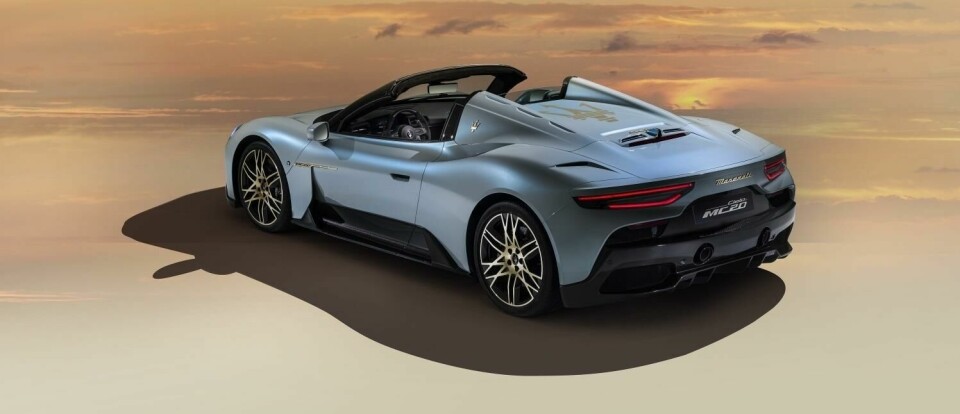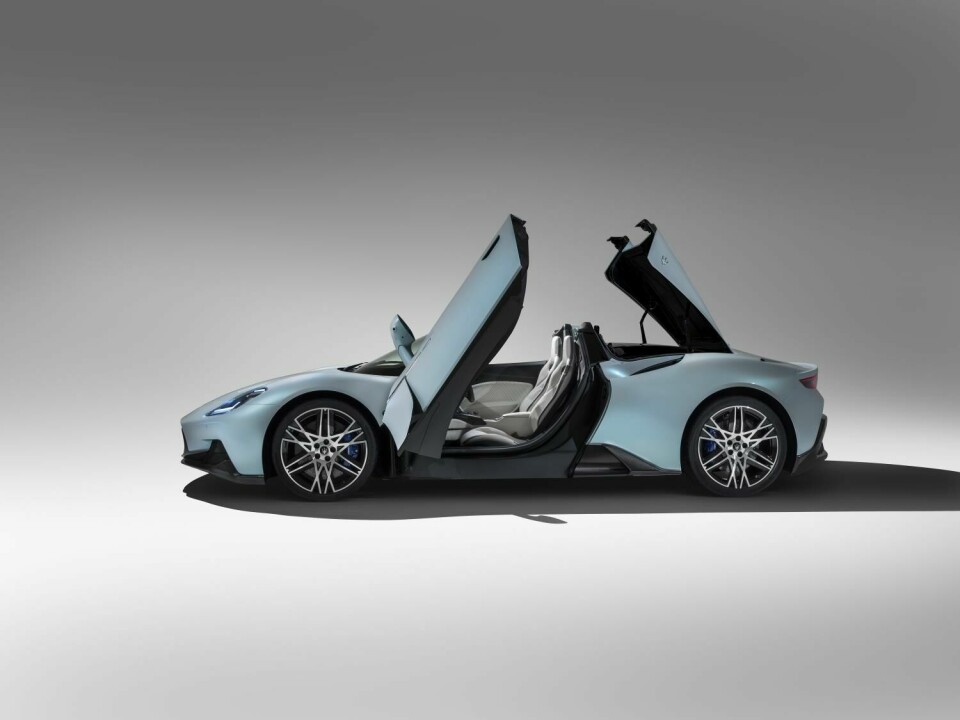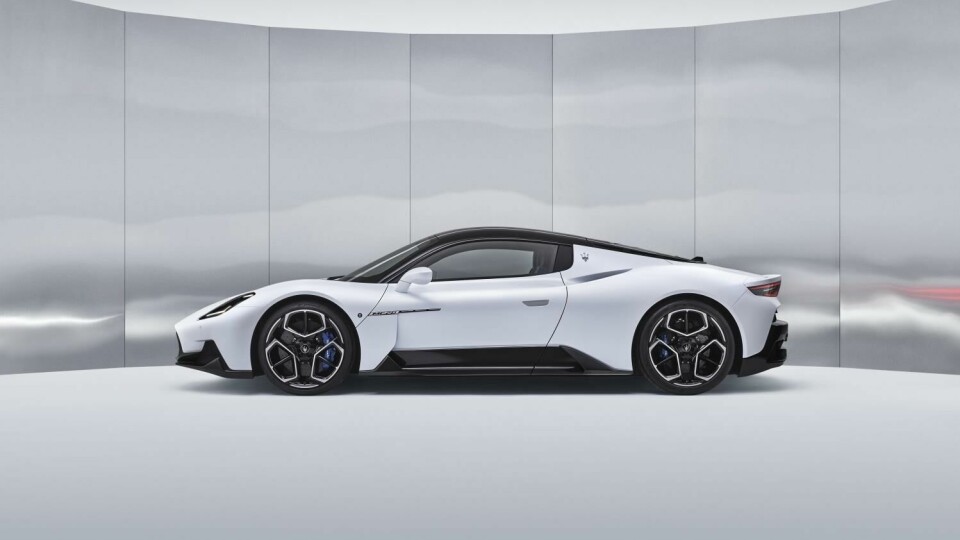
Maserati design lead talks longevity, purity and the new MC20 Cielo
Hot on the heels of a new drop-top supercar, the MC20 Cielo, Car Design News caught up with Maserati design lead Klaus Busse to discuss the design brief and where the brand’s design language is headed
Maserati’s new lightweight supercar, the MC20, was revealed in September 2020 to much fanfare. It was designed with both coupe and convertible versions in mind from the outset and, despite featuring the brand’s new advanced V6 engine, also considered the possibility of an electric powertrain in future. While a plug-in is still in the works – more on that later – a drop-top version, the MC20 Cielo, has launched as expected.
The Cielo – which translates to ‘sky’ – retains the dynamic stance of the original MC20, and visually there is little between the two. One of the most obvious differences is the inclusion of two speed bumps behind each headrest, necessary in terms of packaging that retractable glass roof, but also useful from a rollover protection perspective.

Despite that retractable roof, the Cielo weighs just 65kg more than the coupé, and special effort was taken to ensure the body was not distorted by the retracting mechanism. The challenge, says Klaus Busse, head of Maserati design, was that the original MC20 was already a very tight package.
“Every millimetre is accounted for,” he told Car Design News from Turin. “If you are then asked to fold a roof back into the skin without messing up the proportions of the car, that becomes quite a monumental task.” As a result, about 90% of the work went into managing the proportions of the roof when it was stowed.
“The solution we came up with was to have those two speed bumps behind each passenger. They mask the central Y=0 line, which had to be moved upwards. If you don’t hide that, it messes with the car’s magic proportions. We fine-tuned those shapes to create a silhouette that is almost identical to that of the coupe – which took a long time to develop,” said Busse.
At the core it is a long-distance grand tourer that would not look out of place at the Concorso d’Eleganza
Admittedly, the greenhouse does appear slightly less pronounced with the Cielo, which is bold and capsule-like on the original MC20, emphasised no doubt by its gloss black roof. The gaping air intakes either side of those headrests remain, situated above the wheel arches and clearly visible front on. Those vents carry straight through to narrow openings at the back, flanking the ridged rear deck. A discrete rear spoiler is found on both models, helping to improve downforce without imposing itself too heavily on the silhouette.
That MC20’s handsome face also carries over to the Cielo, emblazoned with Maserati’s signature trident badge. The same goes for the rear, which is near identical to the original MC20. Butterfly doors also keep their place. Aside from the obvious distinction – that glass roof – the Cielo also boasts its own unique colour palette. A new three-layer metallic, Acquamarina, combines a pastel grey base – considered ‘sporty’ – and an iridescent blue-green for warmth, meaning the colour of the car changes depending on the light setting.
Supercar designers today are often tasked with straddling two different worlds: luxury and performance. These are finely-tuned, high-octane beasts at heart, but many will spend their life as curbside eye candy. As such, models like the MC20 must be just as comfortable parked up by the shores of Lake Como as they are setting personal records around Monza.
These are two very different considerations to balance, but Maserati’s overarching philosophy is around the concept of ‘Gran Turismo’. “Even with the MC20 on the track side, at the core it is a long-distance grand tourer that would not look out of place at the Concorso d’Eleganza,” says Busse. “Drivers are blown away by the performance on track, but the real surprise is how comfortable the MC20 is to drive. That’s not by accident.”
The car’s height and shape of the cabin were ultimately designed to make it more of a comfortable place to spend time, he explains. “If you look at other supercars, they have almost a fighter jet cockpit,” he observes. “In our case, we tried to minimise the package and create cabin space. You should be able to drive the car on the track one day and go for a weekend trip the next.”
Crafting the design language can take months or years, but that philosophy goes on to guide an entire era of products
Turning to Maserati as a brand, Busse says the design language today is around “visual longevity.” The aim is to ensure design decisions made today do not lose their sheen in decades to come. In a way, this means the badge could be removed and you’d still recognise it as a Maserati.
“We are not designing cars for a three-year lease. We know that they will eventually find their way into collections or participate in car shows. With that comes the responsibility for visual longevity,” he explains. “Crafting the design language is a process that can take months or years, but it is a philosophy that then goes on to guide an entire era of products.”
A key tenet to this is what Busse describes as ‘purity’. In simple terms, this means each element of the design is there for a reason. “We avoid any kind of decoration, and even when it comes to areas of the design that people would easily forgive us for – like an extra air intake or adding a wing to the car, for example – we avoid that. The MC20 is testament to that way of thinking.”
Building on the issue of purity, Busse takes aim at some designers that use stick on air intakes and exhaust tips to fool customers into thinking a car is more advanced than it is. “Look at the Ghibli, Quattroporte, Levante; if there is an air intake, it means air goes in. If there is an exhaust cover, it means there’s an exhaust pipe. But there is a trend in the industry for a couple of years with fake designs. As part of our brand identity, we try to use as few elements as possible. Those elements we do use, we make sure they are as iconic and ‘Maserati’ as possible.”
The MC20 was in fact designed with the possibility of housing an electric powertrain in future, with the ‘Folgore’ expected some time around 2025. Under the guidance of ‘purity’, the electric version should look similar – if not identical – to the original ICE-powered MC20. But because some other automakers fall into a trap of making air intakes a central element of the vehicle’s design, that could spell trouble when it comes to an electric model, Busse warns. “If you take that intake away, the whole design would collapse. We purposefully avoided that and packaged the system in a way that it is almost invisible as you approach the car.”
Any supercar today offers speed, comfort and looks. Maserati believes it offers something a little different under the central theme of a grand tourer which, realistically, is how most of these vehicles will be used. The Cielo brings the unquantifiable – but undeniable – experience of an open roof without compromising the original design, something Busse and his team should take as a real win.














